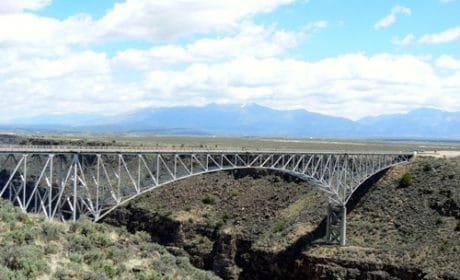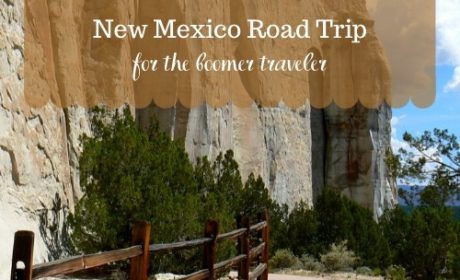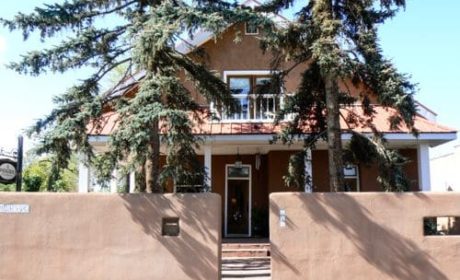Have you driven the High Road To Taos while visiting Santa Fe, New Mexico? This scenic road is a great way to get out of town for a bit. Or do like Alan and I did when we drove the High Road, spend a couple of nights on a Taos getaway before returning to “The City Different.”
A great way to drive to Taos from Santa Fe is up on the High Road through the Sangre de Christo mountains where you’ll skirt 13,000 ft peaks, visit tiny villages and admire the spectacular views. On the return trip, take the Low Road that travels next to the Rio Grande River for a faster route back to Santa Fe.
Table of Contents
High road to Taos stops
The drive from Santa Fe to Taos on the High Road is 105 miles. You can drive it in about 2 to 2-and-a-half hours with no stops. But that would be cheating yourself out of exploring mountain villages, learning about the region’s history or admiring the beautiful views. Here are some of my favorite High Road To Taos destinations.
Stop in historic Chimayó for healing miracles in a must-see church
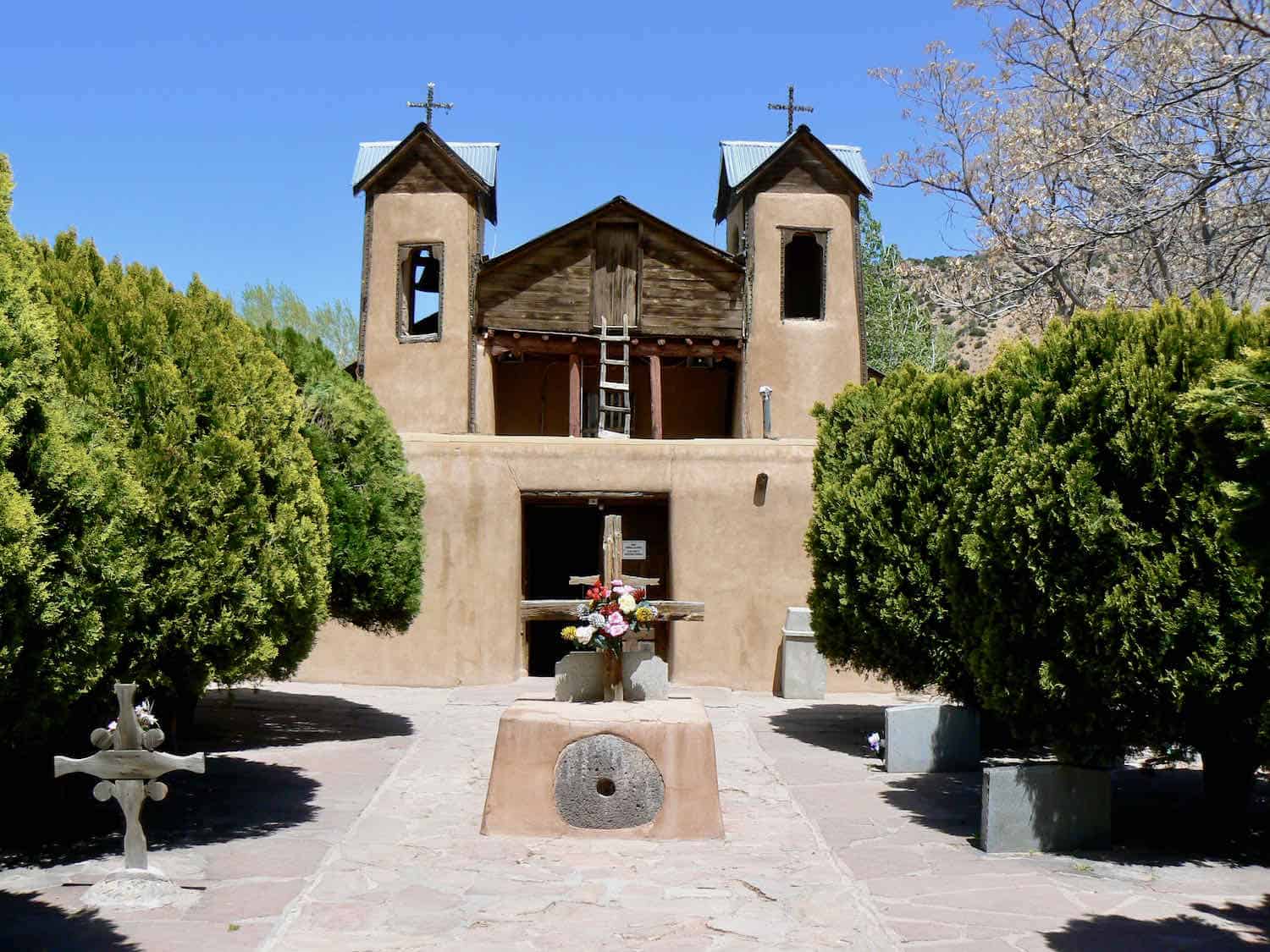
Historic Chimayó, a U.S. National Park American Latino Heritage site, is the first stop on your High Road tour from Santa Fe. Famous for healing miracles, the village’s church, El Santuario de Chimayó, is a must-see.
Nicknamed “The Lourdes of America,” El Santuario de Chimayó attracts 300,000 pilgrims a year seeking cures from the holy dirt that’s located in a small room inside the church. The pit of soil, known as “el pocito” is believed to possess curative powers. But long before Spaniards and Catholics arrived, the Pueblo and Tewa Indians considered Chimayó to be a healing site.
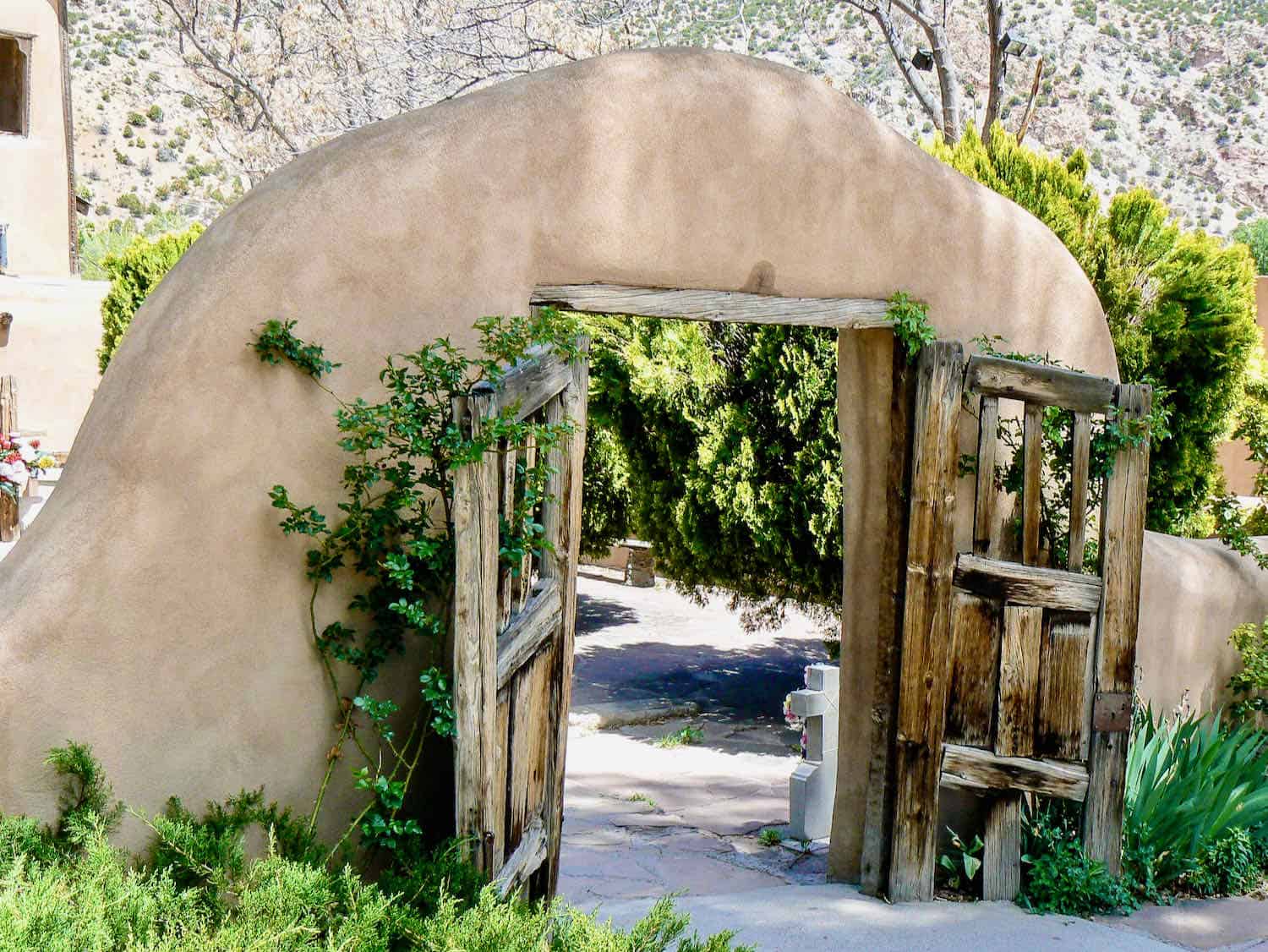
As you enter through wooden doors to a walled garden, followed by an arched gate, take time to admire the beautiful Spanish Colonial architecture. Inside the nave, a noted collection of 19th century Hispanic religious folk art is waiting for your attention.
Continue to the small rooms on either side of the nave. One room holds expressions of thanks from those cured by the soil at Chimayo, including a collection of braces, canes and wheelchairs. The second small room contains the precious holy soil with curative powers.
After touring the church, visit the weaving shops. Chimayó weaving has been passed down through families for generations. There are several shops owned by the Ortega and the Trujillo families famous for their craft.
Boomer Travel Tip
We use the Benchmark New Mexico Road and Recreation Atlas when planning New Mexico road trips.
Visit mountain villages with an intriguing story
Leaving Chimayó, the road winds through old mountain villages settled hundreds of years ago by Hispanic immigrants, some who came to New Mexico during the Mexican Inquisition. Many of these immigrants were actually Jews who had originally fled to Mexico from Spain to avoid persecution during the Spanish Inquisition.
In New Mexico, the Jews assimilated into the Spanish-Catholic population hiding their original religion but preserving their religious rituals in secret. Known as Crypto Jews (or secret Jews), oftentimes only one family member was aware of their heritage.
Rumor has it that until the mid-1960’s, English was rarely spoken here and that the people spoke a Spanish that had close ties to 15th Century Castilian. You can read more about Crypto Jews at the New Mexico Jewish Historical Society.
Reach the High Road halfway point at Truchas
The old Hispanic settlement of Truchas is your next stop, about 9.3 miles up the road from Chimayó with an elevation gain of 1982 ft. You’ve now reached an altitude of around 8,000 ft. See why this is called the High Road?
The early 19th century church, Nuestra Señora del Rosario is worth a look. You’ll find it in the center of the village. Peak inside to view two large altar screens, one dating back to 1821. They are the work of santero (a person who creates religious images) Pedro Antonio Fresquis.
You may recognize Truchas as the town where Robert Redford filmed The Milagro Beanfield Warin 1988. Founded in 1754, the remote community still observes some of the original Spanish land grant bylaws, like cars being required to share the roads with livestock.
Truchas, the halfway point between Santa Fe and Taos on the High Road, has also attracted a number of artists to the region so be sure to browse the galleries during your stop. Art lovers will enjoy the High Road Art Tour held the last two weekends in September.
Discover more Spanish colonial history in Las Trampas
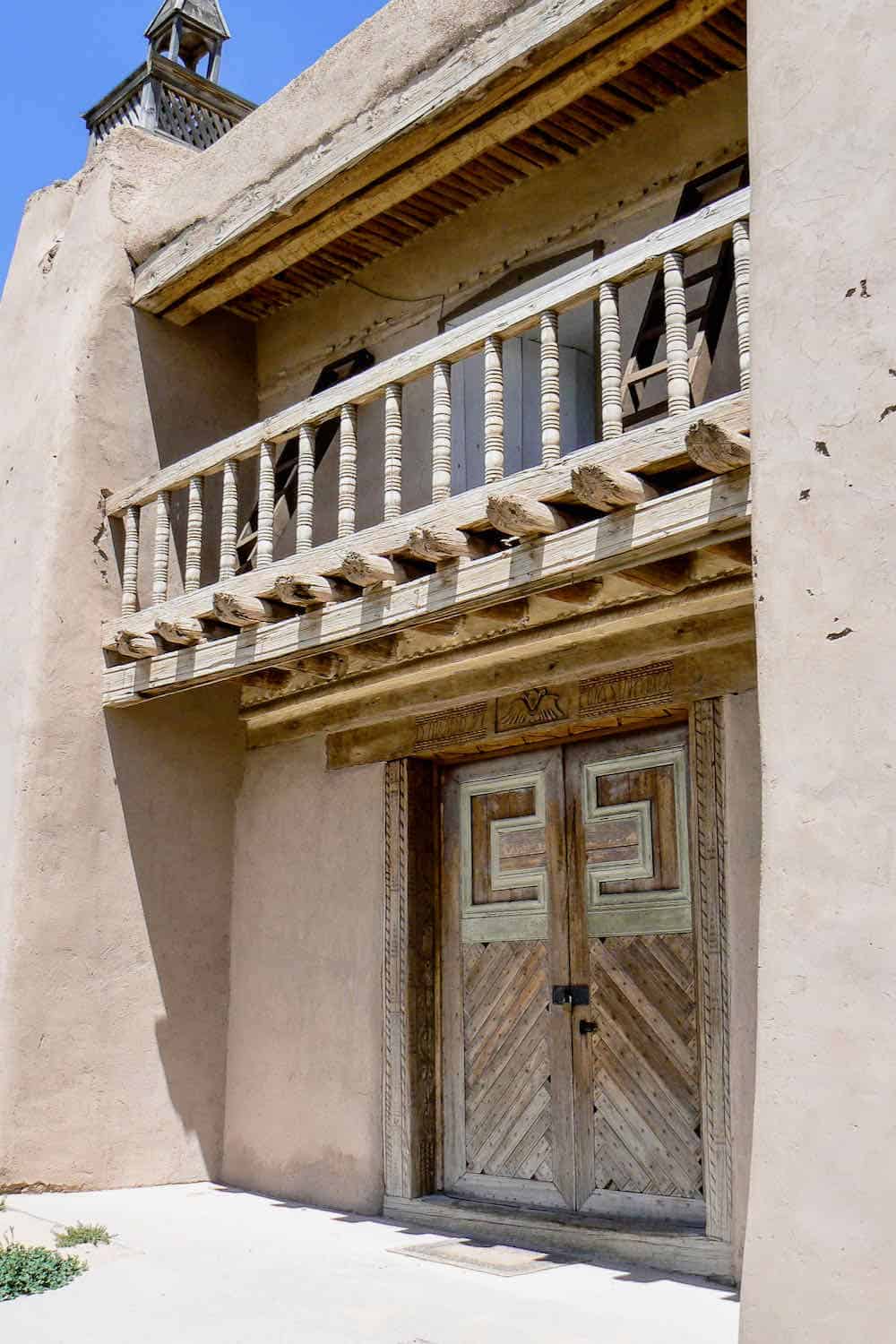
Las Trampas Historical District preserves an 18th century Spanish colonial village that’s worth a look. The historic district and church are National Historic Landmarks.
The original plaza still survives. However the town’s defensive wall ramparts that protected the original 12 families from Native American attack are no longer visible.
Don’t miss the historic San José de Gracia Church circa 1760 to admire another well-preserved example of Spanish Colonial architecture. Still in use today as a parish church, it is often open to visitors on the weekends.
Boomer Travel Tip
Need to update your road trip gear? Start with our recommendations for best road trip gear.
Enjoy the drive through Carson National Forest
A little past the small farming community of Peñasco, the High Road makes a left onto NM 518. Enjoy the drive through Carson National Forest with its alpine landscape and beautiful views.
We’re just driving through on this High Road to Taos adventure. Make a note to return for hiking, fishing, or winter adventures like snowshoeing and snowmobiling. With 1.5 million acres, you’ll find plenty of space to explore in Carson National Forest.
Rancho de Taos is worth a stop
Ranchos de Taos, established in 1725, was originally known as Las Trampas de Taos. Be sure to stop at this tiny village before reaching your final High Road destination of Taos, only four miles up the road.
So when Highway 518 meets Highway 68 at Rancho de Taos, turn right, to explore more Spanish Colonial history. A jog to the left will take you to San Francisco de Assisi Mission Church, another Natural Historic Landmark, dating back to the late 18th Century.
The adobe structure may look familiar. It was painted by Georgia O’Keeffe and photographed by Ansel Adams. The historic church has inspired many other artists as well who strive to meet the challenge of capturing the structure’s heavy buttresses in the ever changing light.
Take time to explore Rancho de Taos Plaza, built on top of an abandoned Native American Village. Some of the buildings are over 300 years old.
Things to see in Taos
Ending (or beginning) this scenic drive in picturesque Taos is a great addition to any High Road to Taos road trip. The Pueblo of this historic New Mexico town dates back about 1,000 years and is known for its artists and bohemian lifestyle. You’ll also find plenty of active travel experiences in Taos.
Be sure to stop at the Taos Visitor Center that’s located on the right as you drive into town
Take a stroll around the Plaza
Strolling the streets around the Plaza is a good way to get a feel for Taos. You’ll want to stop by the historic Hotel La Fonda de Taos and charming Bent Street. And, of course, it’s fun to shop, dine or people watch as you soak in the historical surroundings.
Explore the Taos arts scene
Taos has attracted artists since the beginning of the 20th Century. The Taos Society of Artists was formed in 1915 and in the 1920s, heiress Mabel Lodge Luhan brought Georgia O’Keeffe and D. H. Lawrence to town.
The Harwood Museum on narrow Ledoux Street is worth a visit. If you are a fan of Native American and Spanish Colonial art and handcrafts, the Millicent Rodgers Museum, northwest of town, is a must-see. Millicent Rodgers was an heiress (Standard Oil), a jewelry designer and a serious collector of both genres. The collection is superb.
Boomer Travel Tip
Use our road trip planner to make the most of your next road trip adventure.
Visit the Taos Pueblo
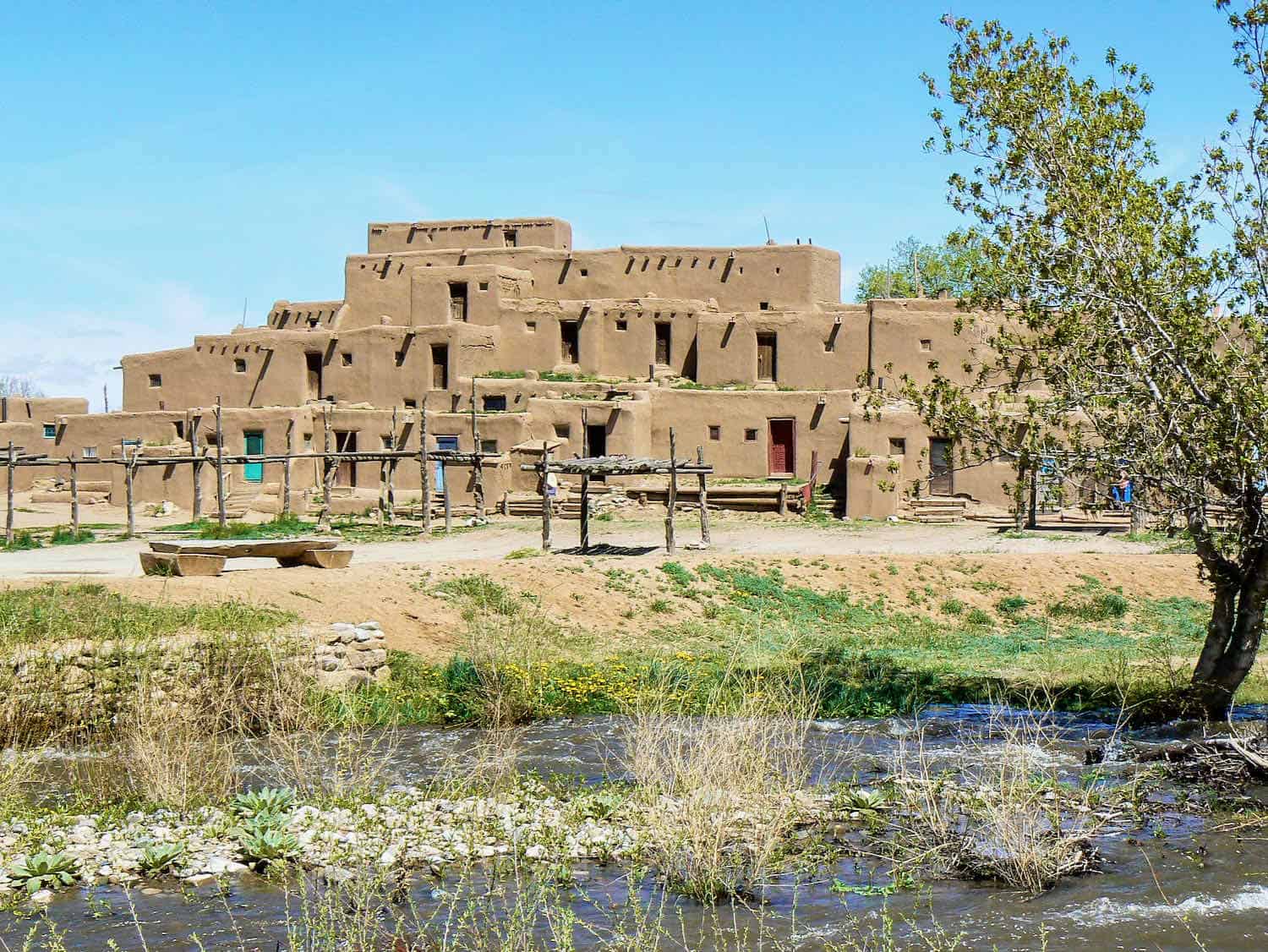
On the way to the museum, you’ll pass the thousand-year-old Taos Pueblo, one of 19 Pueblos in New Mexico. However Taos is not the oldest Pueblo. Acoma Pueblo has been continuously occupied for at least 2000 years.
Make the most of your visit to the Taos Pueblo by taking a tour with a Pueblo guide. It’s important to follow the Pueblo’s rules. If you want to take photos you must buy a permit.
Other Taos historic attractions worth visiting include the Kit Carson House and the Martinez Hacienda.
Walk the Rio Grande Gorge Bridge
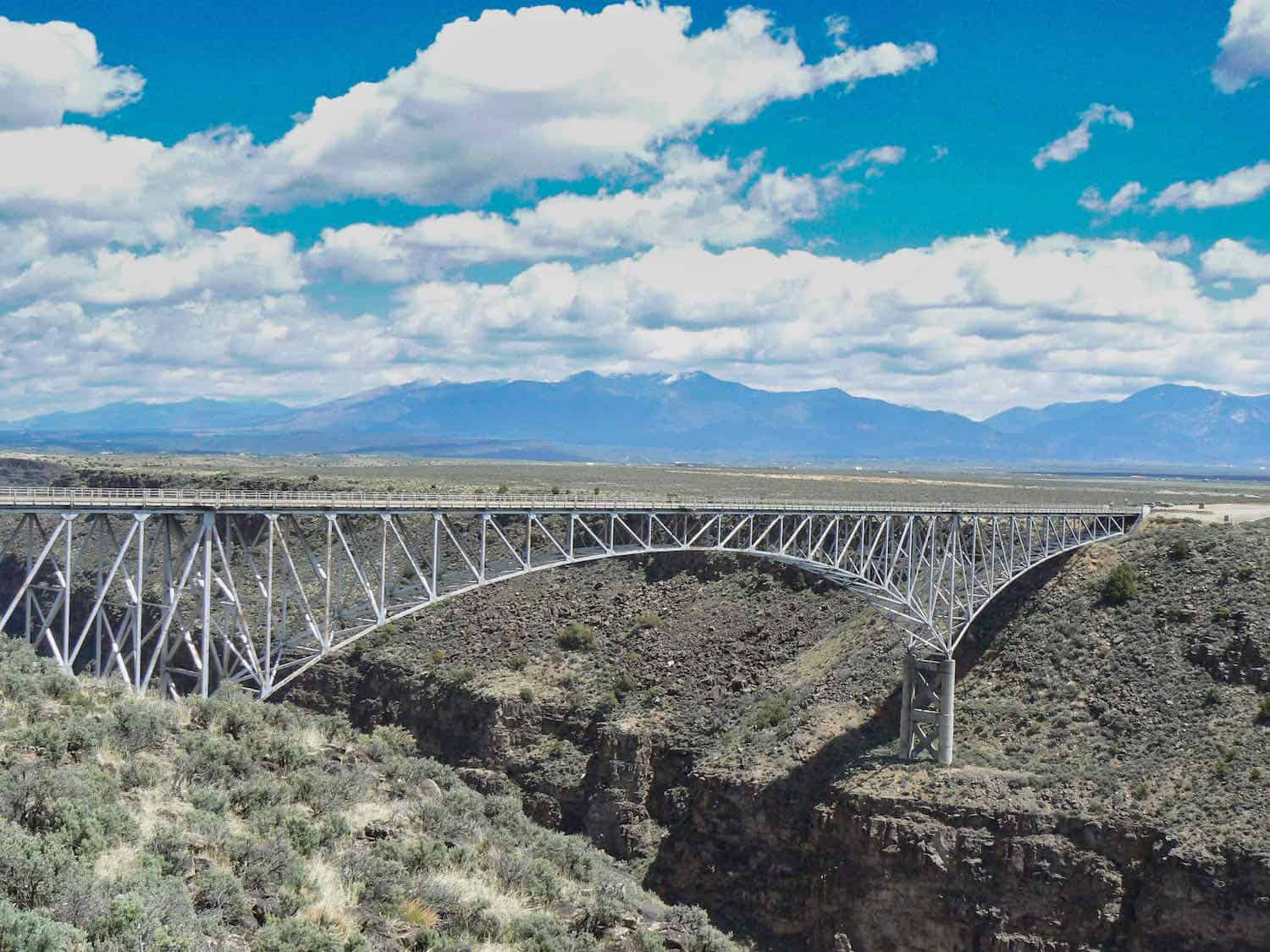
Need to stretch your legs? The Rio Grande Gorge Bride is about ten miles northwest of Taos on Highway 64. To visit the seventh highest bridge in the United States, park your car and take a walk on the bridge for spectacular views of the gorge. The bridge does vibrate so be aware of you have height issues.
If you’re looking for a hike, take the nine-mile (one-way) West Rim Trail that travels south to Orilla Verde with views of the gorge as well as the scenic Sangre de Cristo mountains. The moderate trail (good for cyclists, too) leaves from a trailhead in a rest area on the west side of the bridge.
Where to spend the night in Taos
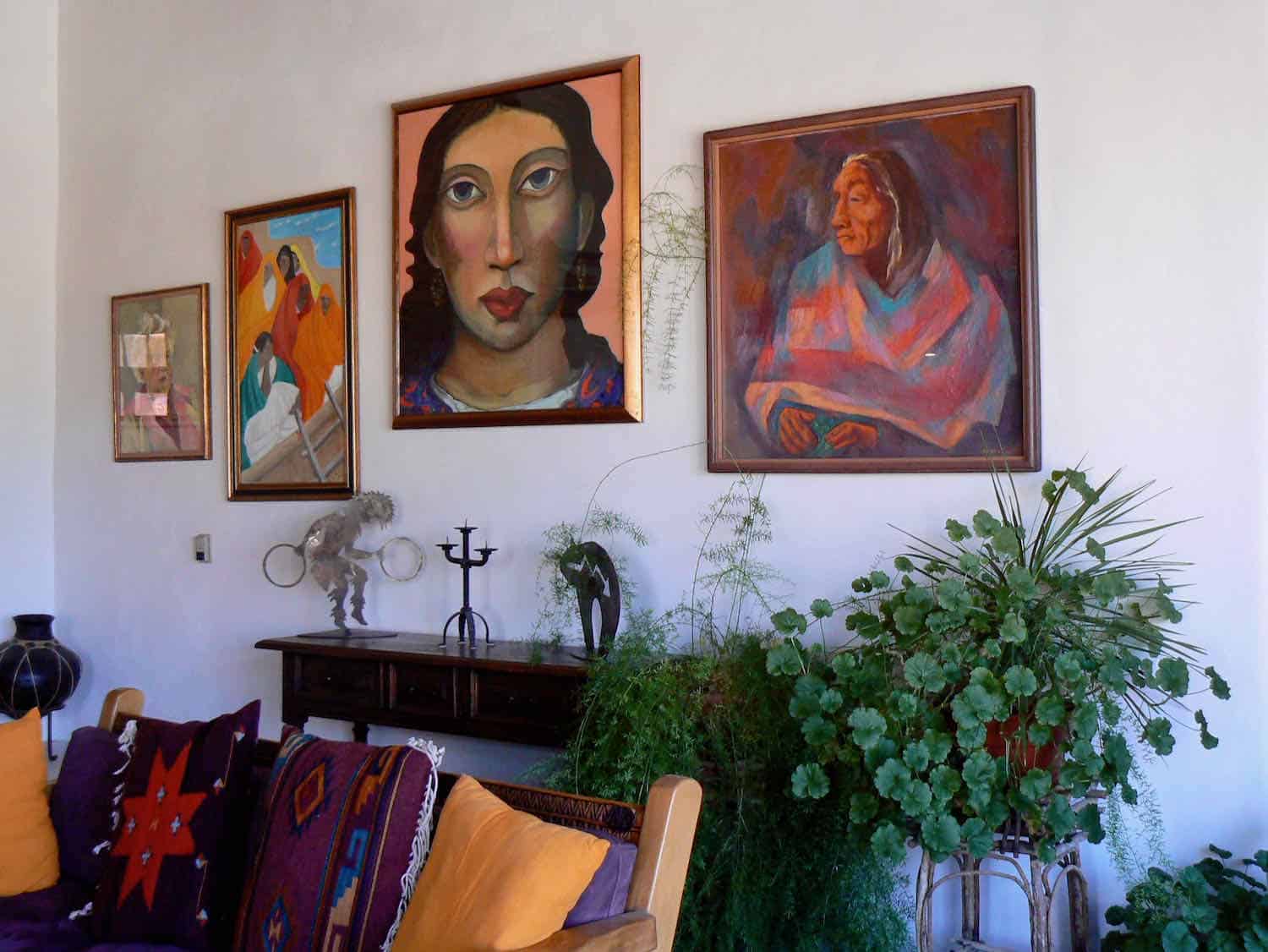
On our trip to Taos, Alan and I stayed at Casa Benavides Historic Inn (book here). The art-filled bed and breakfast was the perfect accompaniment to our High Road to Taos journey. And the breakfasts were divine! Read more about our stay at Casa Benavides Historic Inn.
If a resort stay is more your style, consider the eco-friendly El Monte Sagrado Resort. Convenient to the heart of Taos, the resort is only 3 blocks from Taos Plaza. I recommend splurging by booking a suite.
Hacienda del Sol is another charming bed and breakfast that’s adjacent to the Taos Pueblo. Book here if you enjoy a retreat-like setting. Your lodging includes a made-to-order breakfast.
Return to Santa Fe on the Low Road
When done exploring Taos, return to Santa Fe on the Low Road (NM 68, becoming US 285 and NM 84 at Espanola.) The route winds through the farming communities of the Rio Grande Valley.
Of course this route can be driven in reverse order to my suggested High Road To Taos itinerary. It’s up to you. Just keep in mind that driving time between Taos and Santa Fe on the Low Road is about an hour-and-a-half, depending on traffic. It takes around two hours to drive the High Road between Taos and Santa Fe.
Extend your High Road trip
Why stop with a short drive on the High Road? Continue your boomer road trip in New Mexico with these ideas:
- Continue from Taos to drive the Enchanted Circle Highway.
- Enjoy a New Mexico backroads trip.
- Travel south to explore Carlsbad Caverns and White Sands.

